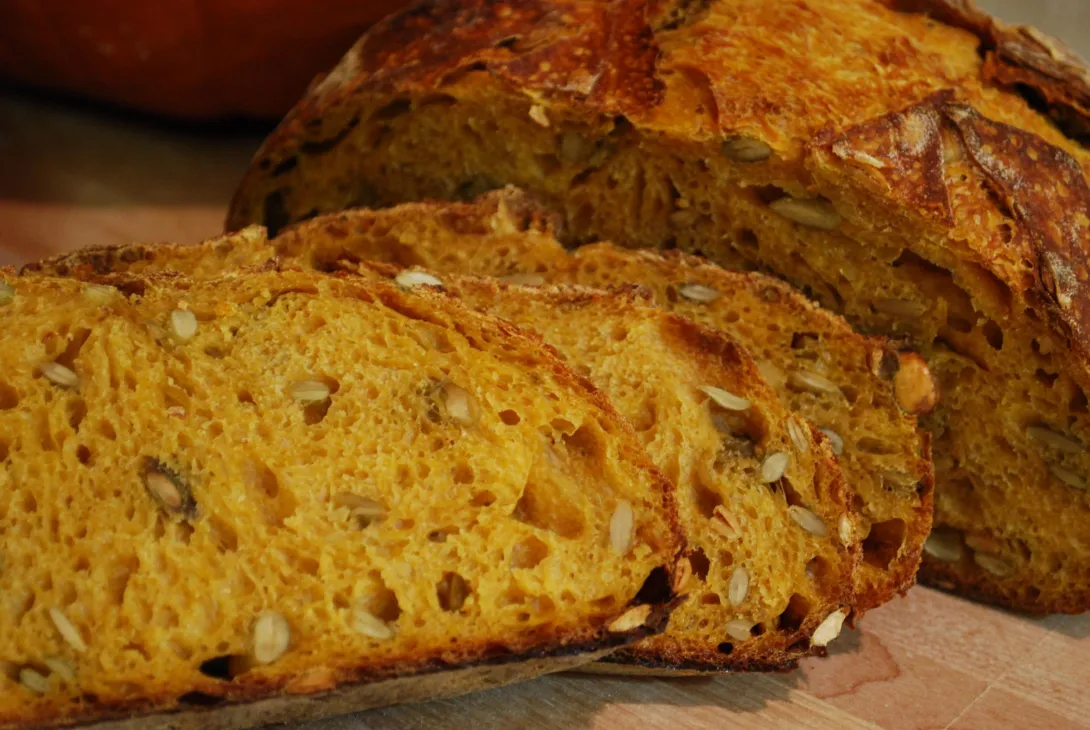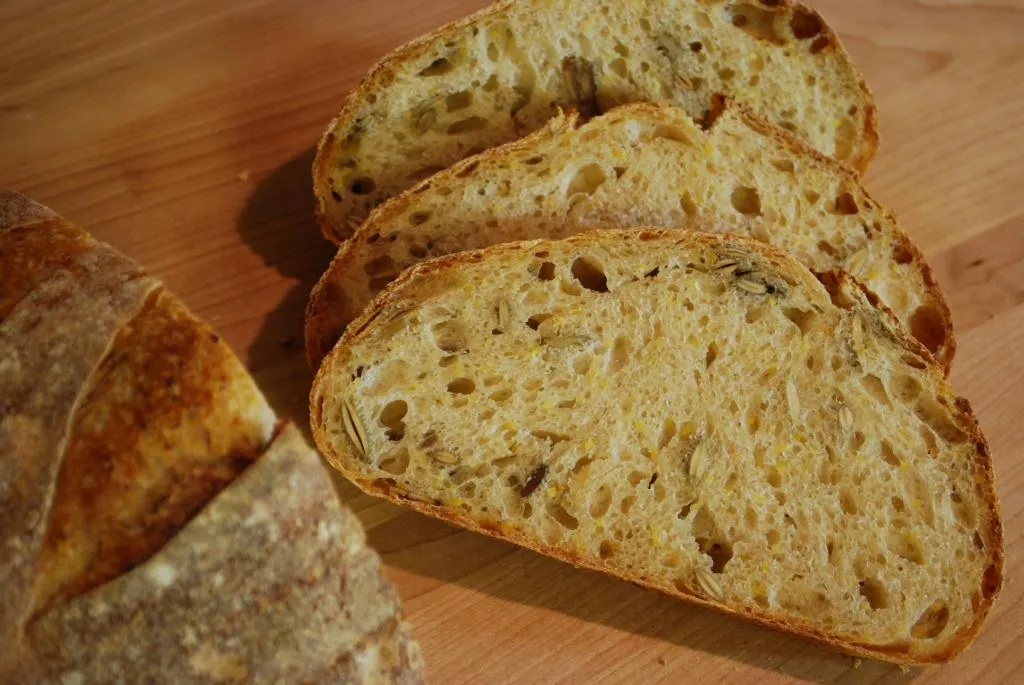wassisname's blog
Pumpkin Sourdough


First off, many thanks to Karin (hanseata) for posting her bake of Dan Lepard’s pumpkin whey bread. What a great idea, and not just for autumn bakes. This is a sourdough, whey-less take on that lovely bread.
Pears and Barley

I guess I should begin with a disclaimer: I’m not usually one to put chunks of fresh fruit in my breads. Nuts, seeds, grains, even a bit of dried fruit, sure. But something about having all those mushy bits in the bread has made me wary of the whole concept. Plus, the sandwich possibilities can be limited.
Polenta Pepita Sourdough

I haven't made this bread in a long time but it is a real treat, and gets devoured as treats tend to do. The precise formula doesn’t really matter so much with this bread – any light sourdough will do - it is the addition of polenta and pepitas (aka, pumpkin seeds, “polenta pepita” is just more fun to say) that makes the magic. The combination is featured in Tartine Bread with the addition of rosemary and corn oil but I’ve never tried it that way. I like the versatility of this herbless version. A little cranberry sauce on a toasted slice really sings.
One Up, One Down
This mixed-starter sourdough has become my favorite style of light-ish sourdough. It has proven itself capable of standing up to my "creativity", and that alone counts for a lot. The rye flour takes some of the chewiness out of the crumb and prefermenting it lends the flavor of the bread a distinct tang. If sour isn't your thing then this probably isn't the bread for you. But, it really works for me. 1/3 whole grain gives it some substance and 70% hydration keeps it easy to work with. I started the dough in the mixer, just until it came together, th
Fun at the Fair
County Fair 2012! The prospect of a few blue ribbons is all the excuse I need to take a day off work and spend it baking instead. Actually, I'd be happy to ditch work and bake bread with no excuse at all but that might worry people…

I managed to put together six different breads from four different doughs this year.




